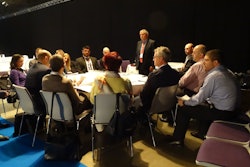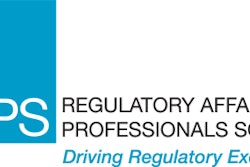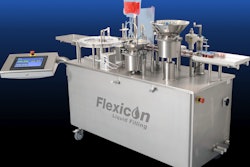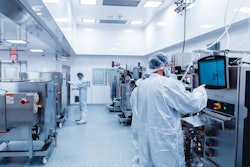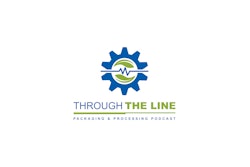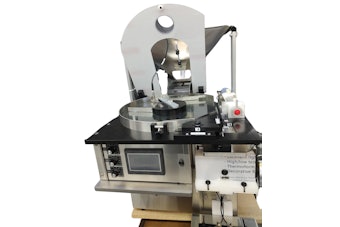At a well-attended tabletop discussion on day one of the Cool Chain & Controlled Room Temperature Logistics Europe conference in Luxembourg, Laurent Foetisch, Managing Director of Supply Chain Operations SA, shepherded participants through “The ‘Ten Commandments’ for Successful Supply of Temperature-Sensitive Products,” developed by Cold Chain IQ and Kaoutar Sahli Lenstra, Senior Cold Chain and Specialties Analyst for Pfizer and a member of the Industry Advisory Board for this year’s event.
The commandments provided an easily accessible summary of some of the major issues presented during keynote and other sessions throughout the day. Among them, the importance of communication, documentation, and a clear understanding of your supply chain. It also allowed participants—some of which represented technology providers, others pharmaceutical and clinical trial companies—to share their experiences.
While a robust discussion resulted in only five of the 10 commandments being covered during the tabletop, Foetisch provided the balance in a handout.
1. Thou Shall Not Forget to Prioritize
“Whenever you start a new temperature-controlled chain, or face new GDP or regulatory requirements, you need to prioritize,” said Foetisch. “You need to think, ‘How can I tackle this big animal? I am not going to eat this big dinosaur all at once, I need to cut it into pieces.’ The question is, how can you cut it into relevant pieces?”
Foetisch suggested a first step is to look at your main products, do some segmentation work, and then run a risk analysis. Once you have determined where the main risks are, he said, you can then begin thinking about the program you want to put together.
2. Thou Shall Not Adopt a “One-Size-Fits-All” Approach
A theme that was exemplified by an earlier keynote by Pfizer Supply Chain Excellence Manager Graham Martin in “Reducing Lead Times and Maximizing Efficiency through Developing a Geographical Zoning Approach,” this commandment advises the development of as many solutions as are required to ensure the integrity of your products throughout the supply chain.
In Martin’s session, he shared how Pfizer uses a system of geographical zoning, or bracketing, for qualifying shipping lanes. It allows Pfizer to establish temperature profiles for lanes that can then be used in other lanes with the same profiles. Although Pfizer ships to 180 destinations, it has just eight packouts for winter and summer, Martin shared.
Said Lenstra in the 10 Commandments document, “With Pfizer, we don’t have any one approach that fits all our sites, but what we have are guidelines.”
3. Thou Shall Not Treat All Partners the Same
The importance of communicating with each and every provider and partner along the entire temperature-control supply chain was one that was emphasized by a number of speakers throughout the day. “You need to have Technical Agreements, you need to get info from [the] forwarding company on their processes and on their trucking partner’s processes,” said Foetisch. “You have to physically talk to your partners, you have to have SOPs, [and] you have to have written agreements. It takes a lot of time and resources to make it happen.”
Advise the 10 Commandments, “There will be individuals and companies who have not been in the position of developing their processes according to pharma standards, so in terms of qualification, mapping, demonstrations of their capabilities, and what they can offer in terms of temperature control logistics, it is important to grade their maturity level in the market.”
4. Thou Shall Not Panic
In his presentation, Martin gave conference attendees this advice. He noted, when you have a temperature excursion on a shipment, “don’t panic!” Wait and see the results from the second or third shipments before making any decisions.
Read the 10 Commandments, “Stop, think, and assess. Then do whatever your data tells you to do. But don’t panic.”
5. Thou Shall Speak the Same Language Internally
Hand-in-hand with Commandment #3, speakers throughout the day also emphasized how important it is to speak the same language internally—and externally. Speakers advised getting all the parties in one room together to explain to them your specific product requirements and expectations around temperature control and handling.
In his presentation, “Tightening Global Processes with Logistics Partners for High-Value, High-Security Temperature Control Products,” Henry Moran, UK and International Supplies Manager for Napp Pharmaceuticals, a manufacturer of controlled substances for pain management, said, “You have to sit down with every provider, every supplier, and every airline to let them know what your expectations are in every lane.” He then recounted how Napp’s response when a new shipping lane was added to Dubai: “We went there and actually went into the cargo hold to look at the temperature, and we let them know exactly what we needed.
“The passion that manufacturers have in what they do has to be conveyed to the service provider. It’s all about communication; trust is critical.”
6. Thou Shall Not Be Complacent
Advise the 10 Commandments, “What people shouldn’t do is just put an instruction on a document and think this is going to protect their product… . What they shouldn’t do is start a new way of shipping or a new lane or a new shipping mode without investigating thoroughly and making sure they understand.”
Again, throughout the day, there was evidence aplenty of manufacturers that had implemented new supply chain logistics strategies—some from scratch—after mapping lanes, gathering data and temperature profiles, and investigating every leg of the supply chain.
In his presentation “Case Study: Logistics Process Performance Management,” Julian Wann, Global Category Leader, Freight & Logistics, for AstraZeneca, explained how the company went from an average of 80% temperature excursions to less than 1% in one year, for those shipments converted from air freight to sea. The process, he related, involved the development of the company’s own internal freight management information system, allowing them complete visibility, and lane-by-lane qualification of sea freight.
7. Thou Shall Not Place Yourself Where You Shouldn’t Be
“Over the years, the pharma industry has been developing its own capabilities for qualifications; it worked mainly for shippers,” said Lenstra. “I think it’s a mistake; it’s not where we ought to be. The manufacturers of those systems have the knowledge more than we do, and we shouldn’t tell them how to do their work. We should tell them what our needs are.”
8. Thou Shall Not Forget to Document
“The most important thing is documentation,” the 10 Commandments advise. “Map your processes. Map your risks. Clearly have people looking at that as a dashboard, as a day-to-day way of working on improving yourself.”
Most of the manufacturers presenting on day one described to attendees their data logging processes and how that data is used to guide decisions. At Pfizer, data is gathered with every shipment, downloaded at the receiving site, and is used for trending. In his presentation, “Case Study: Analysis of Global Logistics Processes to Reduce Temperature Excursions,” Ruud van der Geer, Senior Specialist, Distribution and Global Logistics Center of Excellence, Merck Sharpe and Dohme, explained how his company uses the same system to collect data from shipments.
9. Thou Shall Not Be Too Specific With Technology
In an afternoon panel, “Balancing the Need for Supply Chain Partners to Innovate with the Slow Moving Wheels of Big Pharma to Adopt,” panelists Martin and van der Geer explained how a change in a shipping system can take up to two years. When you go to market and register a new product by the shipping system, Martin said, then any changes to the system have to go through a change control process. His advice, file the qualification process rather than the shipping system.
10. Thou Shall Not Forget to Be Prepared
“A good chain of command is crucial, SOPs, contact lists, escalation lists. It’s all about preparation, clarification, making sure that people know who to go to in an emergency,” concluded the commandments.



